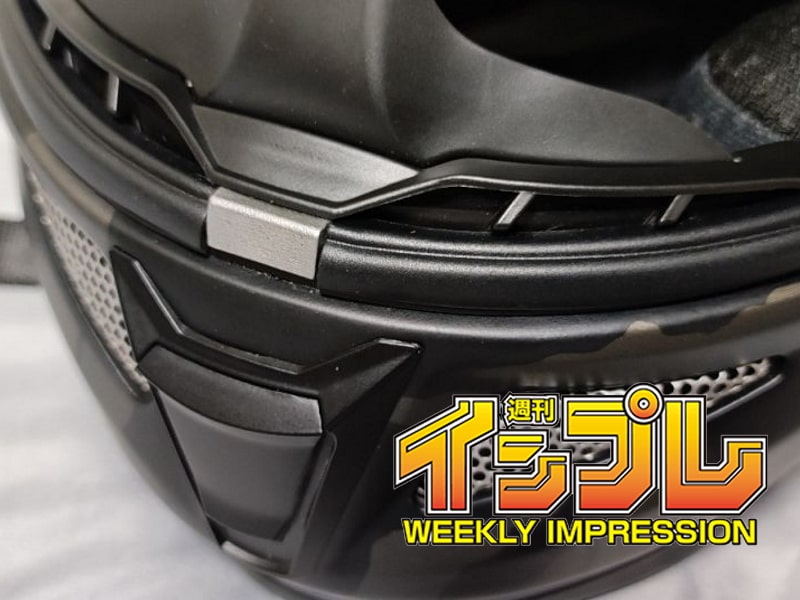Webike "Review" section, collects real voices from riders who have bought and used the products. Please feel free to post your reviews of any kind of motorcycle products and custom parts that you purchase on Webike. Anyone who contributes will receive up to 700 Webike points that can be used for shopping at Webike.
In this issue, we have taken the liberty of picking out the "best" review for the period from June 11, 2022 to June 17, 2022, from the ever-increasing number of reviews every day!
Pick-up Review
Don't underestimate the fact that it is made in Korea

Usage
I usually use an Arai medium size helmet, so I will give my impressions while comparing the two. I had avoided this helmet for some reason because it was made in Korea, but I bought it as a second helmet because of its price in the 200 USD range despite the fact that it is made by MFJ.
Quality
There is no cheap feel or rough finishing, I felt the quality was comparable to that of Japanese products.
Interior
Size M was fine.
Compared to Arai, the sponge is firm and stiff.
The vertical length feels slightly short, which makes it difficult to fit into the hollow of the ear, and furthermore, the strap protrudes from near the ear, which makes it feel like it is in contact with the ear.
There is no cover on the speaker hole, so if you put a thick speaker that touches your ear, there is a lumpy feeling and displacement when removing/attaching the speaker.
Strap cover cross section is misaligned in a parallelogram shape and does not fit or feel comfortable in contact. (See photo)
The straps are too tight in the back and tight around the neck.
The three parts are fitted with snap fits, making it overwhelmingly easy to put on and take off, and I recommend it over Arai for those who frequently wash their clothes for commuting, etc.
Although I wrote many things about it, it is generally good and not decisive compared to Arai.
Weight
The M size graphic, without options, weighed 1380 g. It feels light the moment you hold it in your hand.
Breathability
Personally, I think it is a must to have direct ventilation to the mouth, but there are surprisingly few models that have it.
The RPHA11 has direct ventilation from the front wire mesh to the mouth for easy breathing. For some reason, the opening is limited to about 1/3 by Styrofoam, but it can be enlarged by cutting it out, and it can be opened and closed from the inside.
The RPHA11 has only a wire mesh, while the Arai has a filter in this area to prevent foreign objects from entering.
The forehead opening is quite cool with enough airflow to feel the wind at about 50-60 km.
On the other hand, the top of the head does not feel any airflow for the size of the opening, although it seems to be ventilated since it does not feel stuffy.
The RPHA11 has no such feeling, while the Arai defroster made my eyes feel dry.
Shield
The operation of attaching, detaching, and opening/closing is far easier than that of Arai.
Just push the lever in the designated position to detach, and push it in to attach.
The center lock is controversial, but I did not mind it. Depending on the shape, the center ventilation may be touched during the lock operation, which is troublesome, but the RPHA11 was fine.
Since it can be opened slightly by simply releasing the notch, stop-and-go is easier than Arai, which can only be opened slightly by bending the shield and exerting force.
However, I feel that the adhesion to the shield rubber is not good, because the loudness of the ambient sound does not change when the shield is locked.
Quietness, aerodynamics
There is no unpleasant hissing sound, quietness is adequate, and although I only checked up to about 100 km, there were no problems with straight-line stability or rearward vision.
Safety
Although not nominally certified in Japan, it is ECE22.05 certified, so it must have a minimum performance, but I am a little concerned because the SHARP test showed the lowest level of protection for the temporal area.
Summary
It has some improvements in safety and fit, but it has excellent ventilation and functionality and is quite cost-effective. I plan to use it as a second helmet for commuting at low-speed ranges and practicing on tracks where it is safer than on public roads.





It's weird that it doesn't go straight.
There are many people who place absolute trust in Japanese helmets. Unless you really like the design or can't afford to buy Japanese products because they are too expensive.
I think it is a general feeling that Japanese products are the best in terms of safety and quality!
But what about HJC, which is used by famous riders in races? The price is cheaper than Japanese products, and if the performance is not too much or not enough, there are many people who might want to buy one. In fact, it seems to me that the number of people I have witnessed using it has increased dramatically.
What I introduce here are the actual impressions of HJC helmets by a rider who usually uses Arai helmets and compares it to the actual HJC helmets. It's very convincing because it honestly describes the results of actually buying and using the helmet!
Good reviews, with multiple images of the inside of the helmet, which is hard to capture!
(From Webike staff: Kadowaki)
Thank you, omega7, for your wonderful reviews! Webike will give you 1000 points to spend on your next purchase at Webike Shopping.
Webike provides "Reviews" section, a collection of reviews and opinions from senior riders. Post a review and get up to 700 Webike points for free, so we look forward to hearing your real feedback.



